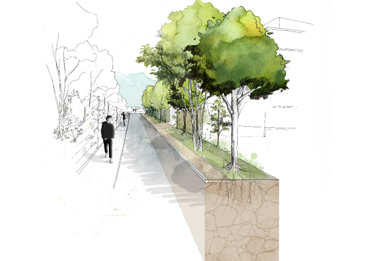

Developing a vegetation strategy tailored to Chêne-Bougeries requires considering vegetation structures as the past, present, and future of the Chêne area. To study this living heritage, the methodology adopted for this research is based on the quantitative data available from the Geneva SITG; on the analysis of visual surveys carried out during field visits; on the summary of working sessions with the town planning and green spaces departments; the compilation of cantonal and municipal development planning documents - in particular the Municipal Master Plan, which went out to consultation in autumn 2020; and finally, the study benefited from the results of research carried out by the relevant federal and cantonal departments into nature in the city and the maintenance of biodiversity. Cross-referencing all this data, both qualitative and quantitative, is essential in order to determine and recognise the existing environments and plant structures, but also to bring research into a positive approach to the current problems facing our territories to a greater extent.
This step led to the identification of potential sites for implementing a long-term vegetation strategy in the municipality. The research explores this potential with originality in order to break out of the constraints of urban perimeters and make room for the living, a perennial resource for the future of the Chênois area. The landscape can be seen as a tool for both spatial and temporal synthesis, with the aim of achieving urban planning that is receptive to and adapted to the challenges of global warming. On the one hand, it embodies a spatial approach to devising a vegetation strategy that is informed by the ecology of the environments in which it is used, as well as their history. On the other hand, it identifies the actions that need to be taken over the long term to ensure the sustainability of existing vegetation structures, and those that need to be developed to maintain a high-quality leaf surface.
The study also identifies possible partners who can help the municipality to maintain and develop its green heritage. The results communicated in this study are of the order of an inventive analysis, i.e. mobilising the landscape and its interaction of players to determine new positions for the municipality and develop its actions in consultation with partners and the residents of Chêne-Bougeries.
Illustration Matthieu Faudrin: continuous planting pit project
Project partner(s)
Project leader - team
Natacha Guillaumont
(HEPIA),
Julien Joly
(HEPIA),
Mathilde de Laage (HEPIA)
,
Alain Dubois
(HEPIA),
Matthieu Faudrin (HEPIA)
,
Brice Goyard (HEPIA)
,
Maëlle Proust
(HEPIA),
Thomas Sébille (HEPIA)
,
Nicolas Valloton (HEPIA)
